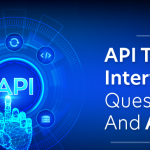Spring Framework vs. Spring Boot: Making the Right Choice for Your Java Projects
In the ever-evolving landscape of Java development, the Spring ecosystem has emerged as a powerful force, enabling developers to create robust applications. Within this ecosystem, two key players stand out: Spring Framework and Spring Boot. While sharing a common origin, they cater to different development needs. In this article, we’ll conduct an in-depth exploration of Spring Framework and Spring Boot, equipping you to make informed decisions tailored to your project requirements.
Unveiling Spring Framework
The Spring Framework, affectionately known as Spring, stands as a comprehensive and modular toolkit. With a myriad of tools and features, it facilitates the construction of enterprise-grade applications. Its foundation rests on the principles of Inversion of Control (IoC) and Dependency Injection (DI), fostering loose coupling, testability, and maintainability. Within its realm lie diverse modules like Spring Core, Spring MVC, Spring Data, and Spring Security, each addressing distinct facets of application development.
Diving into Spring Boot
Spring Boot, a project within the Spring ecosystem, takes center stage in simplifying application building. It strives to minimize the effort and time invested in setting up infrastructure, configuration, and deployment. This is achieved through auto-configuration, embedded servers, and opinionated defaults. By leveraging Spring Boot, developers can leapfrog into projects with minimal configurations, expediting their development journey.
http://informationarray.com/2023/08/26/redux-vs-react-state-management-an-in-depth-analysis/
Comparing Spring Framework and Spring Boot:
| Aspect | Spring Framework | Spring Boot |
|---|---|---|
| Complexity | More complex due to manual config | Significantly simpler due to auto-config and defaults |
| Configuration | Extensive XML or Java config | Convention over Configuration with minimal config |
| Setup | Requires more setup time and effort | Minimal setup, swift project bootstrap |
| Dependency Mgmt | Manual dependency management | Simplified dependency management |
| Embedded Servers | Not provided out of the box | Includes embedded servers (Tomcat, Jetty, etc.) |
| Microservices | Suitable but requires manual setup | Ideal for microservices architecture |
| Development Speed | Slower due to configuration overhead | Faster development with built-in defaults |
| Learning Curve | Steeper curve, more to learn | Easier curve for quicker adoption |
| Customization | Highly customizable architecture | Limited flexibility for rapid development |
| Community | Established with abundant resources | Growing community with active support |
| Use Cases | Complex enterprise apps, larger teams | Rapid development, microservices, small to medium projects |
Picking the Right Path
Selecting between Spring Framework and Spring Boot hinges on your project’s specifics and your development inclinations. If you’re crafting intricate enterprise apps with a substantial team and necessitate substantial customization, Spring Framework might be your ally. In contrast, Spring Boot suits scenarios demanding prompt development, microservices architecture, and streamlined setup.
Conclusion
The Spring Framework and Spring Boot, though distinct, both wield unique strengths in the realm of Java development. The former equips developers with a comprehensive toolkit for building intricate applications, while the latter expedites the development journey by minimizing configuration complexities. The right choice hinges on understanding your project’s essence and objectives. Whichever avenue you traverse, the Spring ecosystem remains a steadfast foundation for crafting potent and efficient Java applications.








